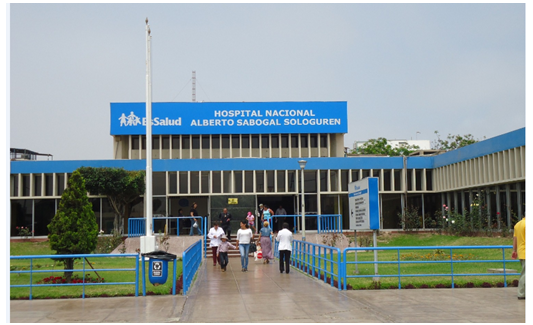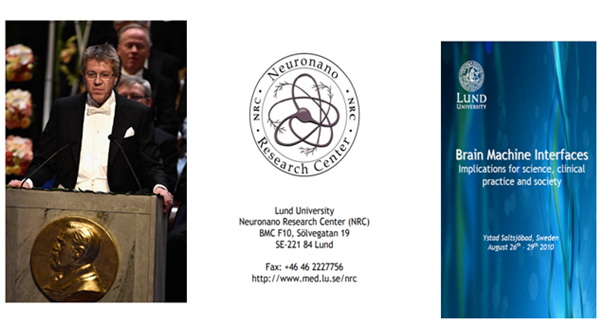eISSN: 2574-9838


The 2014 Nobel Prize in Physiology or Medicine was awarded to John O’Keefe, May-Britt Moser and Edvard I. Moser, researchers for their discoveries of cells that constitute a positioning system in the brain, an “inner GPS” in the brain. The Nobel Foundation affirm that the proof which demonstrate that their researches performed on rats also work on humans, is based on information obtained from brain imaging techniques and patients who have undergone neurosurgery. It is a mystery why the Nobel Foundation promotes with conviction that the 2014 Nobel Prize in Medicine winners has found the human brain Global Positioning System. Nowadays, recent researches lead to suspicion that many neuroscientists’ researches can be based with brain nanobots performed in Latin America, being one of the most suspicious, the BRAIN initiative, this project was promoted by The Klavi Foundation. The 2014 Nobel Prize in medicine winners have close relations with this foundation, Therefore, there is a strong suspicion that illicit human experimentation with brain nanobots would have been the real source of information about 2014 Nobel research.
Keywords: Nobel prize, scientific fraud, nanotechnology, hippocampus, latin America, brain, computer interfaces
The Nobel Prize in Physiology or Medicine is considered the highest scientific award in science and it is the award a doctor dreams with since he is a medicine student, hence the importance and symbolism that this award has in science.
The Nobel Prize-winners in Medicine include Alexander Fleming for the discovery of penicillin, Francis Crick and James Watson for the discovery of DNA, Frederic Banting for the discovery of insulin, Adolf Krebs for discovery of Krebs Cycle, Werner Frossman for his discoveries concerning heart catheterization. The 2014 Nobel Prize in Physiology or Medicine was awarded to three psychologists, for their discoveries of cells that constitute a positioning system in the brain, an “inner GPS” in the brain.1 Understanding where we are in space is one of the most fundamental issues for survival.2
Kant considered that the perception of location, regardless of experience, was an innate ability needed to perceive and organize the environment around us.1
Great mystery that emerges with this GPS brain discovered by 2014 Nobel-winning scientists is the claim that it works in humans. Nobel Foundation bases its assertion that the GPS found in rats also works in humans, in recent studies using brain-imaging techniques and from patients who have undergone neurosurgery.1
However, the current state of neuroscience does not support this assertion. In short, the current noninvasive technology does not allow performing an appropriate mapping of a live human brain. The lack of evidence has caused the scientists to really doubt of the Nobel winners finding about the human GPS. Thus, in the main magazine, Hippocampus, dedicated to that subject, states in a special issue dedicated to the 2014 Nobel Prize in Medicine, a scientist expresses his non-conformity with the delivery of this prize. They affirm the that this description “finding the brain’s “internal GPS” system” obfuscates the real significance of their work.3
A scientist from the National Autonomous University of Mexico thinks that it is erroneous to speak about the existence of a “human GPS”, because GPS equipment works receiving signals from satellites orbiting the Earth. Comparing the brain location system with a GPS is incorrect, since the human brain once knows an environment, it does not need external signals, and it knows intrinsically where it is.4
Therefore, it is a mystery how the 2014 Nobel Prize scientists have shown that their research on mice GPS functions in humans and why the Nobel Foundation promotes with conviction that the 2014 Nobel Prize in Medicine winners have found the “human brain GPS” (Figure 1).

Figure 1 The human GPS: Nobel Foundation infographics that circulates around the world
In spite of Nobel Foundation infographics, it is a mystery as they have shown that his research on mice GPS functions in humans. It is very likely to exist as a model of a secret living human brain.
Source The poster for the Nobel Prize in Physiology of Medicine 2014 .Available in: http://www.nobelprizemedicine.org/portfolio-items/the-poster-for-the-nobel-prize-in-physiology-of-medicine-2014
Given the existence of the academic agreement among the army, the transnational companies and the universities, the so-called Bush triangle,5 it is possible that the Nobel Prize winners for the human GPS have been able to receive information about illicit human experimentation with brain microchips like the Google brain of the Google transnational company6 or of Defense Advanced Research Projects Agency (DARPA) according recent researches, is suspicious of being performing illicit human experiments in Latin America7 and that could hypothetically include forced human experiments with brain implants like cortical modems or artificial hippocampus. Artificial Hippocampus is very promoted by DARPA;8 hippocampus is the main research topic of the 2014 Nobel Prize winners. However, the strongest evidence available until date is mainly the brain nanobots.9 The Nobel Prize winners would have based on the nanotechnology as an information source for demonstrating the Nobel Foundation that their findings in rats are applied to human beings (Figure 2).

Figure 2 Latin-Americans Hospital: Main target of nanotechnology mafias
The photo shows the Alberto Sabogal Hospital in Peru, it is near to Naval Medical Research Unit Six (NAMRU-6), the only US military command located in South America.
Source copyright author
All these facts lead to suspicion that the real reason for this demonstration of rats GPS in humans can be a secret and illicit human experimentation in Latin America with invasive neurotechnology like brain implants, brain microchips or nanobots.
It is necessary to highlight that although scientists of the big transnational as Ray Kurzweil, Google’s Director of Engineering, promote brain nanobots as innocuous and as a benefit for the society10,11 really the brain nanobots are a weapon against humanity; they can be used as mind control weapons and can turn a human being into a machine or animal.12,13 Brain nanobots can enslave us and can lead to digital slavery.
The strong suspicion of illicit nanotechnology as real source of the Nobel Prize winners’ information is based on the following reasons:

Figure 3 The Nobel Foundation and Neuronano research Kiehn, member of the Nobel Assembly who chose the 2014 Nobel Prize in Medicine (Left), was invited as a moderator at a nanoneuroscience conference (Center and right)
Source Left (getty Images) Center (ref 33) and right (ref 34)
Many neuroscience projects like neuromorphic chips, which simulate the human brain function, have been only developed during the last nine years, without further human experiments that support them, since nowadays there is no a human brain model; it is surprising that something can be imitated without understanding it. Recent researchers affirm that recent US neuroscience projects could be performing, by force, in human beings with brain nanobots that would be the real information source,6,9,21,22 as it could have happened also with human GPS.
The BRAIN project is a US multi-million research project that was announced by Barack Obama. This is promoted as a project that seeks to obtain the necessary tools so that the scientists obtain the image of the brain in action and to allow understanding how we thought, learn or memorize23 The BRAIN project initials mean “Brain Research through Advancing Innovative Neurotechnologies”. Recent research suspects that this “Advancing Innovative Neurotechnologies” of the BRAIN project are really brain nanobots.6,9,21,22,24
The relation of the 2014 Nobel Prize winners with the BRAIN project is symbolized in the Nobel lecture. When the Nobel winner, May-Britt Moser, read her Nobel Lecture, she showed the discovery of human GPS as a triumph of the Brain project.25
It is necessary to highlight that the Kavli Foundation organizes and promotes the BRAIN initiative.26–28 In September 2011, The Kavli Foundation convened a meeting.27 This meeting is considered as the pioneer in organizing the BRAIN project.26 One of the winners “inner GPS” participated in this pioneering meeting about BRAIN project organized by The Kavli Foundation.27 It is clear that, because the final document of this meeting, the objective of the BRAIN Project and the Klavi Foundation that promote it, was to perform neuroscience projects with brain nanobots, as was written in a newspaper headline about the BRAIN project method.29
It is evident that, since this technology is not approved to be used in humans, these human experimentations with nanobots suggested that they were going to be illicit and forced. Thus, it is suspected that the BRAIN project, promoted by the Kavli Foundation, was to be developed with mafias of nanotechnology and the obtained information was to be used by a mafia of neuroresearchers who would get illicitly rich and obtain academic prestige.
Years later in 2014, the Kavli Foundation granted the Kavli prize to O'Keefe30 being even congratulated in the White House by the President of the United States, Barack Obama.
Coincidentally, other winners of the Nobel Prize co-founded the Kavli Institute for Systems Neuroscience in 2007 and they manage this institute until now.31
May–Britt Moser is promoted by the press as the brain cartographer; she affirms that her projects are performed with magnetic functional resonance 32. However, recent researches lead to suspect that many brain-mapping researches are being really developed with illicit nanotechnology. 6,9,21,22,24
On the other hand, given the magnitude of this prize, the access to state-of-art scientific information owned by the Nobel Foundation and the rigorous selection and extensive research that it performs to choose the winner of the so important prize, it is suspected that the Nobel Foundation would really know the secret and illicit information sources that winners suspected to have, the brain nanobots. Suspicion that is reinforced because Ole Kiehn, one of the Nobel committee, Karolinska Institute, Medicine University responsible for selecting the 2014 Nobel Prize in Medicine winner, has close relations with circle of scientists who research the brain-machine interface and mainly with nanoneuroscience institutes; Kiehn was recently a moderator at a conference organized by the Neuronano Research Center, Faculty of Medicine, Lund University, in Sweden.33,34
Given the recent and surprising frequency of Nobel Prize winners regarding researches related to the human brain, a suspicion also appears that there would be other Nobel Prizes that could also be based on forced human experiments with illicit nanotechnology in Latin America, in complicity with the Nobel Foundation itself.
The nanotechnology as a real information source of the 2014 Nobel Prize probably is a secret of the scientific press, not only because its silence, but because recent researches by which it is suspected that mass media magnates are the main organizers and beneficiaries of this illicit nanotechnology network in Latin America,21,22 being one of the main media, Nature magazine, the main scientific magazine promoting the surprising “neuroboom” owned by Mac Millan Publishers company, which is also owner of Scientific American, another magazine promoting the suspicious “neuroboom.”
Ole Kiehn remains a member of the Nobel committee35 (vice-chairman) and continues choosing the Nobel Prizes in Medicine.36 In 2015, John O'Keefe was elected by the BBC to make a biographical documentary about his scientific life.37 In 2018, May-Britt Moser and Edvard Ingjald Moser have been recognized with the highest award of Norwegian government, The Royal Norwegian Order of Saint Olav, conferred by the Norwegian King.38
It is necessary that scientists, academic institutions, and authorities to research how GPS in human brain was really discovery in order to avoid damaging human beings health and continuing scientific frauds because there is a strong suspicion that the illicit human experimentation with invasive neurotechnology would have been the real source of information about the 2014 Nobel research.
None.
Authors declare that there are no conflicts of interest.

© . This is an open access article distributed under the terms of the, which permits unrestricted use, distribution, and build upon your work non-commercially.